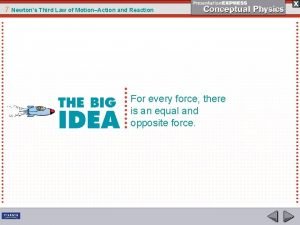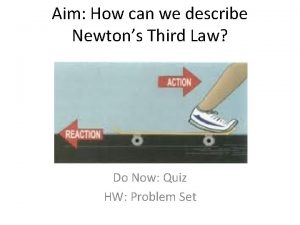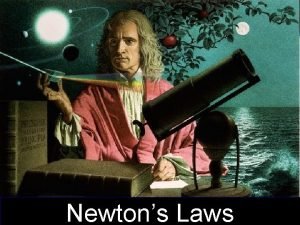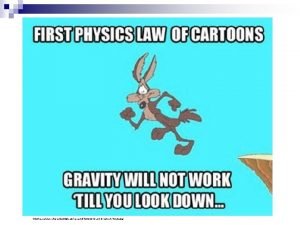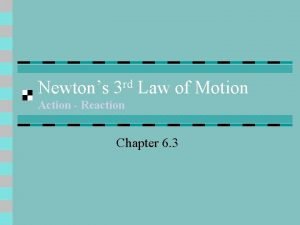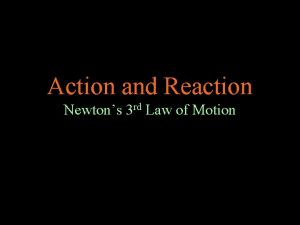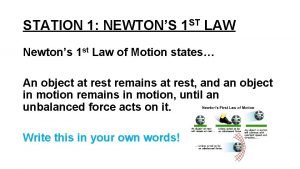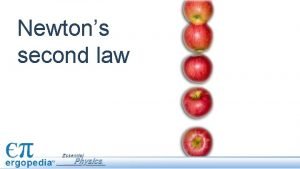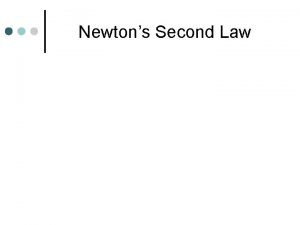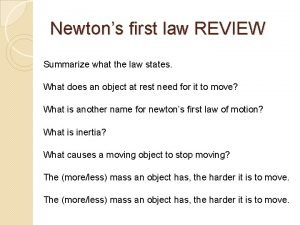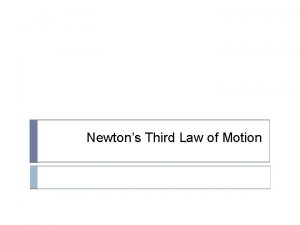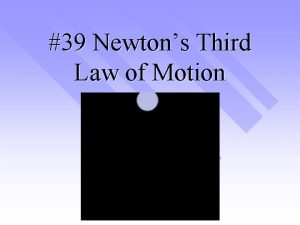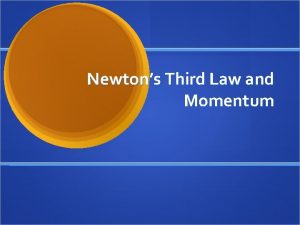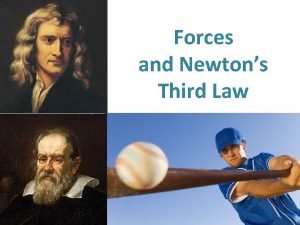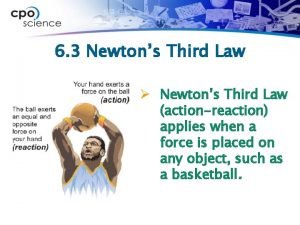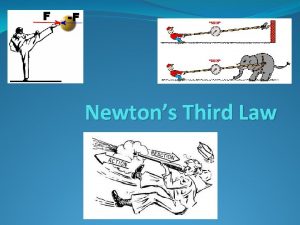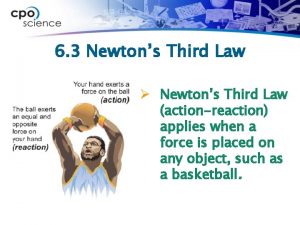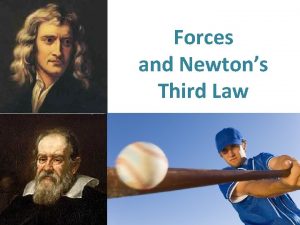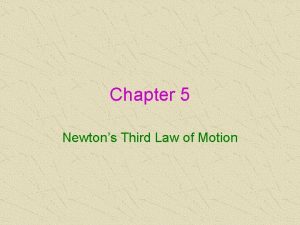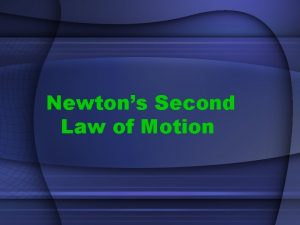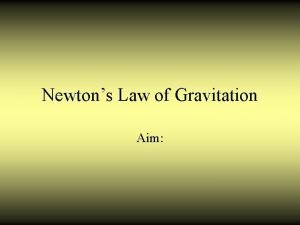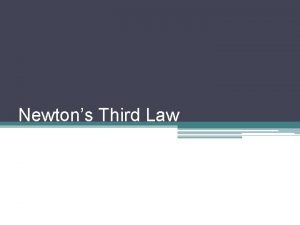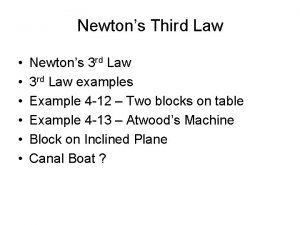5 Newtons Third Law of Motion Force interactions





















- Slides: 21

5 Newton’s Third Law of Motion • • Force interactions & Newton’s 3 rd Law Systems Vectors, Components & Vector Addition Homework: RQ: 4, 5, 10, 11, 12, 13, 15, 17, 20, 21. Ex: 13, 22, 30, 38, 39, 43, 44, 45, 48. Problems: 1, 2, 3, 4. 1

Forces and Interactions • inter = between • all forces are interactions between masses • each mass feels same size force 2

Newton’s 3 rd Law of Motion • Whenever one object exerts a force on a second object, the second object exerts an equal and oppositely directed force on the first. 3

Systems • (net-external force on a system) = (mass of system)x(acceleration of system). • often defined so unknown forces can be determined, e. g. , tension can be determined below. 4

What external forces act on this system? Can the system move? 5

What forces act on the man? Draw a Force Diagram for him. 6

Summary of Newton’s Laws • 1 st: • 2 nd: • 3 rd: Fnet = 0 constant velocity Fnet = ma Forces occur in pairs (equal size, opposite direction) 7

Newton’s 3 rd Law Pair Notation • use “x” marks on forces that are 3 rd Law pairs. • Remember: There will never be two “x” marks on one motion diagram. • The other “x” will be on force diagram of other object. • Use “xx” for a different interaction, etc. 8

Force Diagram each object. Which has greater acceleration when released? 9

Pract. Physics: Page 21 #2(at bottom) 10

Vector Addition • addition is done tail-to-head, also called “parallelogram rule” • added to determine net force • if net force is known, we use vector addition to determine components, e. g. lantern hanging from two ropes. • // 11

Which strings have greater tension? 12

13

Add Velocities to Find Speed & Direction 14

Diagonal of Square is 1. 41 times its sides 15

3 -4 -5 Rule 16

Components of Vectors • component = part • horizontal part is the “x component” • vertical part is the “y component” 17

Practical Vector Addition 18

Summary • All forces are interactions, i. e. , part of a pair of forces • Newton’s 3 rd Law: pairs have equal size opposite direction • Systems are defined to determine unknown forces • Vectors, Vector Components, Parallelogram Rule 19

Practicing physics • Do Page 27 • Refer to page 26 to review parallelogram rule of vector addition 20

Action and Reaction 21
 Site:slidetodoc.com
Site:slidetodoc.com Newtons third law of motion
Newtons third law of motion Newton's 3 laws of motion
Newton's 3 laws of motion Describe newtons third law
Describe newtons third law Third law of thermodynamics derivation
Third law of thermodynamics derivation What is newtons law
What is newtons law Studyja
Studyja Newton's first law and second law and third law
Newton's first law and second law and third law Si unit of newton's first law
Si unit of newton's first law Newtons 3 rd law of motion
Newtons 3 rd law of motion Newtons 3 rd law of motion
Newtons 3 rd law of motion Rd law
Rd law Newton's 1st law meme
Newton's 1st law meme Newtons 3 rd law of motion
Newtons 3 rd law of motion Newton's 3 law
Newton's 3 law Newtons 3 rd law of motion
Newtons 3 rd law of motion What is newtons first law
What is newtons first law Application of newton's laws
Application of newton's laws Newton's 2nd law of motion definition
Newton's 2nd law of motion definition Brainpop newton's laws of motion worksheet answer key
Brainpop newton's laws of motion worksheet answer key Summarization of newton's first law
Summarization of newton's first law What are newton's 3 laws
What are newton's 3 laws

